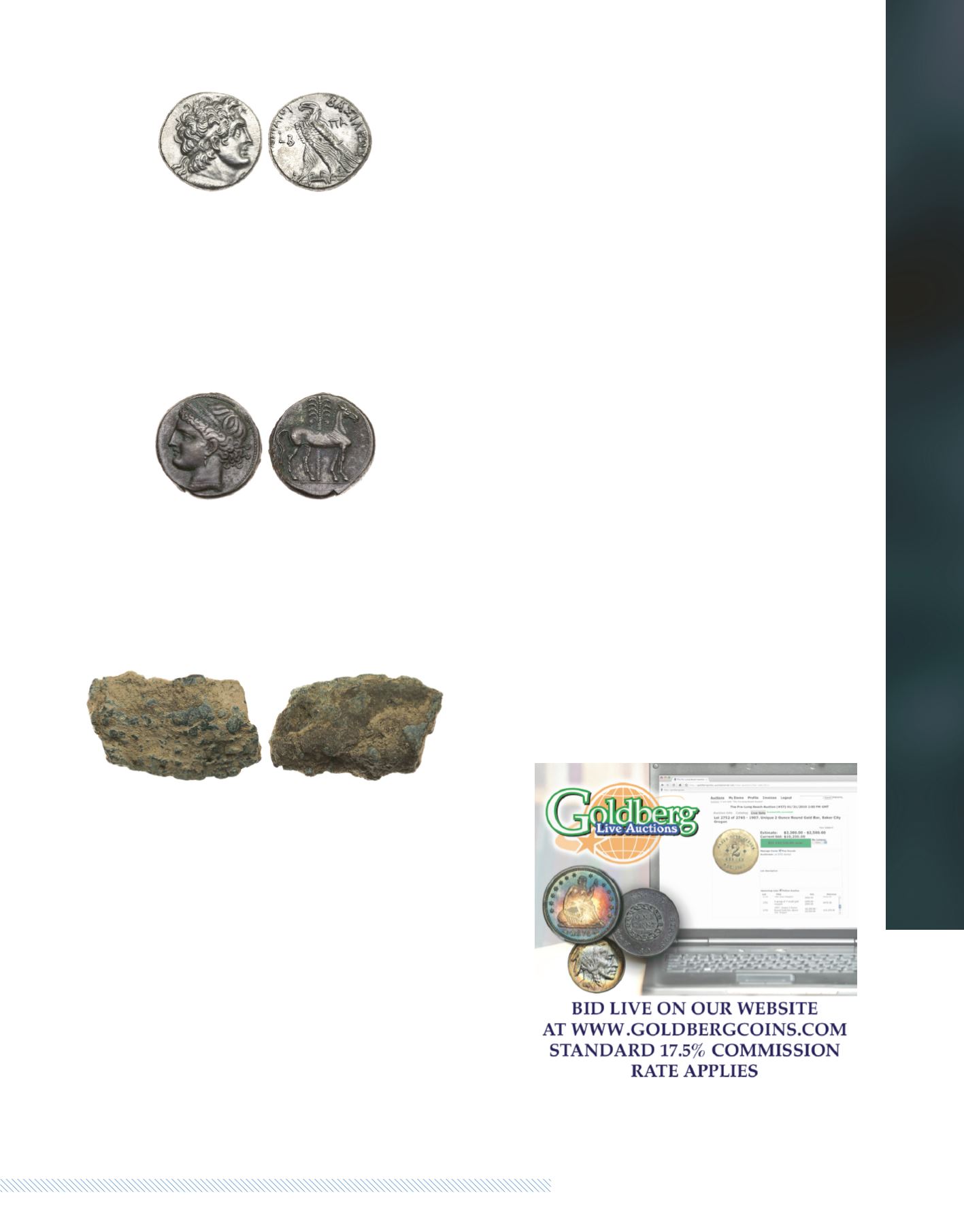

77
bid online at
www.goldbergcoins.com(800) 978-COIN (2646)
|
1936
Ptolemaic Kingdom. Ptolemy IX Soter, 116-106 BC. Sil-
ver Tetradrachm (13.60 g)
.
Dated year 2.
Diademed head
right of Ptolemy.
Reverse:
Eagle standing left on thunderbold;
in field, date. SNG Cop 348; cf. Sv. 1660.
Lustrous Superb
Extremely Fine
.
One of the original portrayals of the walking eagle which
inspired the design of our own U.S. walking eagle half dollar.
Estimated Value .................................................$900 - 1,000
Ex Goldberg' s Sale 90, Sept. 4, 2012, lot 3159
.
1937
Zeugitania, Carthage. BI Tridrachm (11.00 g), ca. 210-
201 BC
.
Second Punic War issue.
Wreathed head of Tanit left.
Reverse:
Horse standing right; palm tree in background. MAA
44; SNG Copenhagen 191. Uniform dark chocolate brown
patina. Well centered and lovely style.
Extremely Fine
.
Estimated Value ................................................... $300 - 400
R
OMAN
R
EPUBLIC
C
OINAGE
1938
Anonymous. Æ Partial Disk-shaped Aes Formatum
(229.63 g), 4th century BC
. Mounded obverse, flat reverse.
ICC pp. 26-8, pl. 84; Haeberlin p. 4, pl. 2, 7. Heavy concretions
and deposits over green patina.
Otherwise virtually as
made.
While native sources for precious metals were scarce in Italy,
mining of bronze stretched back into prehistoric times. Small
bronze lumps, called
aes rude
, are regularly found in ceremonial
settings thought to be votive deposits offered to various divini-
ties, and are also found in hoards that suggest a use in
exchange. Even before Rome developed a uniform coinage sys-
tem in the early third century B.C. it had already codified the
rates of exchange for oxen and sheep in bronze. As bronze was
traded by weight during this period, bronze hoards often con-
tain everyday objects such as axes, adzes, weights, various ani-
mal shapes, and large cake-shaped disks, frequently broken
into smaller chunks as is the case here. Haeberlin called these
items
aes formatum,
and they served and perhaps inspired later
aes grave
issues.
Estimated Value ................................................... $300 - 400



















